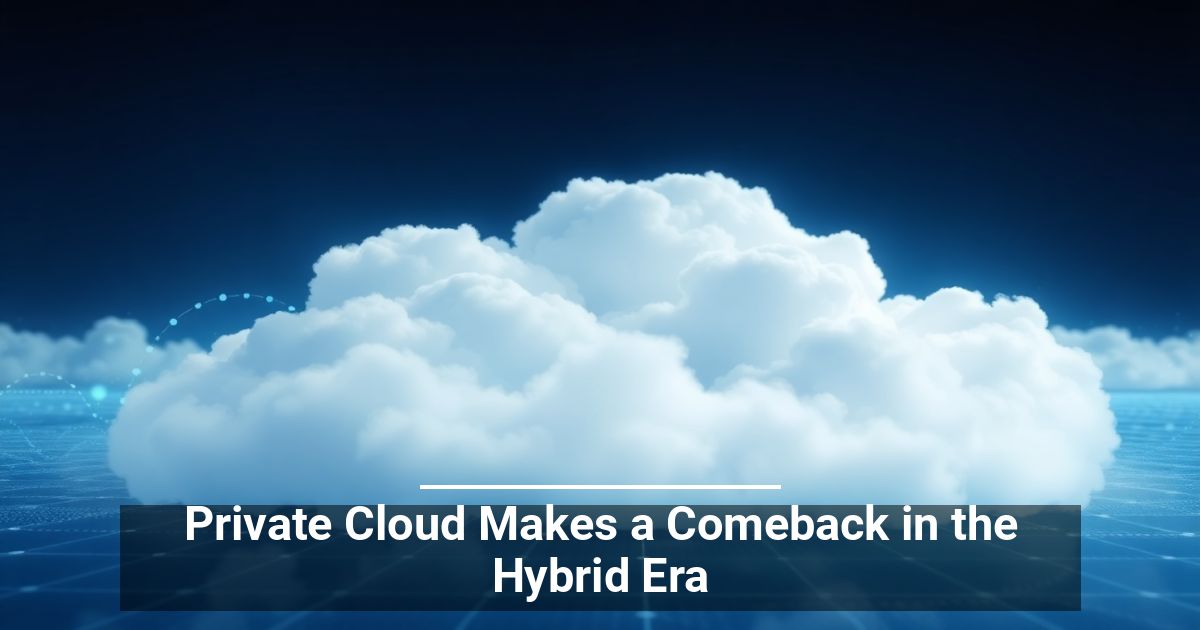 For years, conversations about digital transformation have primarily focused on public cloud providers. Businesses of all sizes lean on cloud giants like Microsoft Azure, Google Cloud, and AWS for the scalability, speed, and reach they couldn’t easily build in-house.
For years, conversations about digital transformation have primarily focused on public cloud providers. Businesses of all sizes lean on cloud giants like Microsoft Azure, Google Cloud, and AWS for the scalability, speed, and reach they couldn’t easily build in-house.
Public clouds remain the backbone of modern business agility, but a growing trend is emerging, with companies shifting back to private clouds in the hybrid era.
Why Is the Private Cloud Regaining Traction?
Hybrid cloud strategies that blend the best of public and private environments give businesses the flexibility they need. Not every workload belongs there, though.
As organizations evolve their cloud infrastructure modernization efforts, many are realizing that bringing some workloads back to a private cloud can help strike a better balance between performance, control, and compliance.
Three main reasons are driving this shift: security and compliance, support for new workloads, and cost predictability.
Security and Compliance Requirements
Between data breaches, tightening privacy regulations, and questions about data sovereignty, companies are rethinking where sensitive data should live. In industries such as healthcare, finance, or government, compliance standards demand tighter control than the public cloud can provide.
A sovereign private cloud gives your company the power to dictate exactly where data resides and who can access it. This control is crucial for complying with regional laws such as GDPR or CCPA. It also allows IT leaders to maintain stronger oversight of identity management, encryption, and workload isolation.
New Workloads Need Tailored Environments
As AI, edge computing, and IoT become standard parts of enterprise IT, not all workloads fit neatly into public cloud environments. Some require extremely low latency or highly specialized hardware configurations. Others depend on keeping data close to where it’s generated.
A private cloud in the hybrid era lets businesses design purpose-built infrastructure for these unique workloads while still connecting seamlessly with public cloud services for more standard functions. This approach delivers the IT agility and control of private infrastructure, along with the elasticity of the public cloud.
Predictable Costs Are Better Than Endless Variables
While public clouds are flexible, their costs can be unpredictable. Many businesses face ballooning bills due to unexpected usage spikes or under-optimized workloads.
A private cloud environment provides more opportunities for cloud cost optimization. Businesses can budget, allocate resources efficiently, and forecast expenses with greater accuracy. Over time, especially for consistent or high-demand workloads, this predictability can translate into significant savings.
Finding the Right Mix for a Hybrid Cloud Strategy
The goal isn’t to abandon the public cloud. Businesses that embrace a hybrid cloud strategy for enterprise workload management can run workloads in the most suitable environment based on performance, compliance, and cost. As cloud adoption matures, innovative companies are no longer asking, “Public or private?” They’re asking, “What’s the right mix for us?”
Public clouds will continue to dominate global accessibility and rapid innovation. But private clouds are proving their value again in the hybrid era, delivering control, predictability, and confidence where organizations need it most.







